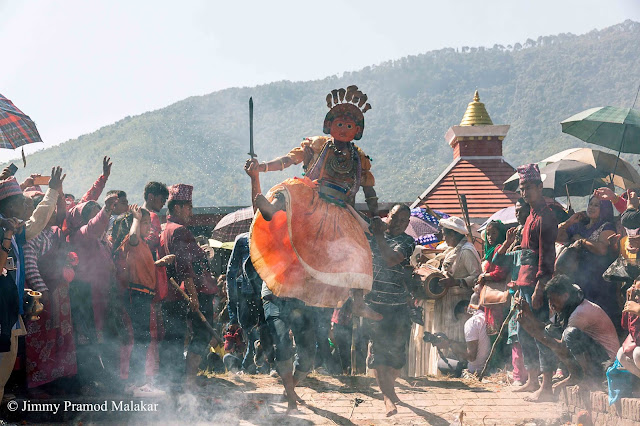When the crisp autumn air begins to colour the evening sky and most Nepalis get ready with their kites to welcome Dashain, the people of Khokana, a medieval Newari town, located 10kms from the city’s core, gear up to celebrate their own festival, the Sikali Jatra.
One of its kind, this seven-day festival is the town’s substitute for Dashain. The festival commences on the day of the Ghatasthapana and is celebrated with different rituals, dances, and feasts till the day of Fulpati.
Goddess Rudrayani (Sikali)—a manifestation of Durga—lies at the centre of the Jatra and is worshipped alongside 14 masked deities. The masked deities, who are adorned in age-old regalia and jewelry, perform a ritual dance during the festival, and are represented by selected members of the Guthis that organise the festival. Three different Guthis (Ta-Guthi, Sala Guthi and Jhahu Guthi) come together to put out this unusual but vibrant festival.
The Sikali Jatra dance, that takes centre stage during the festival, almost always commences with deities high up in the air, held and supported by other Guthi members. And with a host of musicians playing in the background, any observer struggles not be overwhelmed.
Offering is an important part of the festival and three buffaloes and ducks are religiously sacrificed at the local Siddhi Temple in Bhakha of Khokana every year. It is believed that this festival has been celebrated continually since Nepal Sambat 336 (1217 CE).
The locals believe that celebrating this festival will keep at bay any misfortunes in the year ahead. And with Khokana being one of the few places in the Valley where Dashain wasn’t eventually adopted in some form, opting instead to retain their own traditional harvest festival—which is what Sikali Jatra ultimately is—this jatra has in turn become not just an important communal festivity but also an essential part of the town’s identity.



















No comments:
Post a Comment